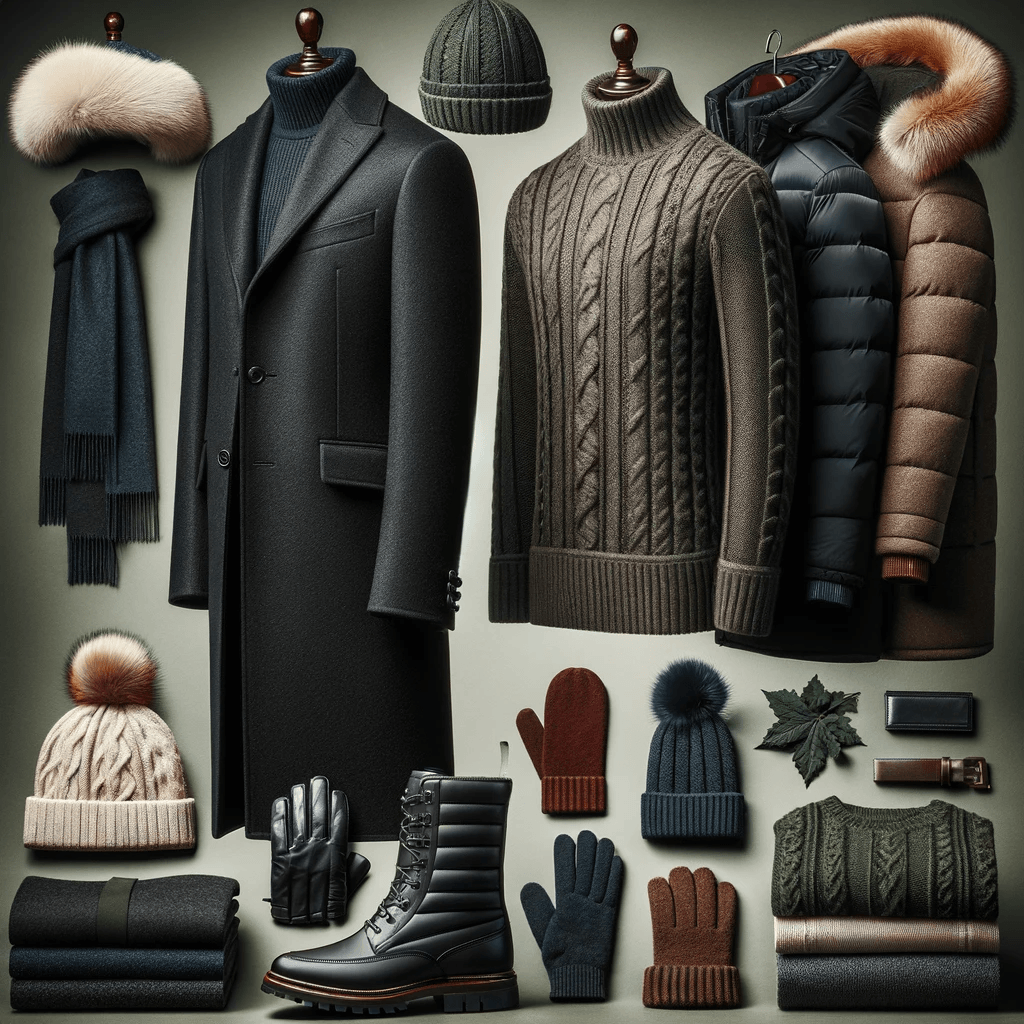

For North American winters, which can be extremely cold, especially in the northern regions, it's important to choose materials that offer excellent insulation, moisture-wicking properties, and wind resistance. Here's a list of materials that are commonly used in winter clothing to provide warmth and comfort:
Wool: Natural wool is a traditional choice for cold weather. It's excellent at retaining heat, even when wet. Merino wool, in particular, is prized for its softness, breathability, and moisture-wicking properties.
Down: Down, typically from ducks or geese, is a highly efficient insulator. It's light and compressible, making it a popular choice for jackets and coats. Look for a high fill power for better warmth.
Fleece: Fleece is a synthetic material that provides warmth without being heavy. It's breathable and dries quickly, making it a good layering option.
Thermal or Synthetic Insulation: Synthetic insulators like Thinsulate, PrimaLoft, or polyester fibers are alternatives to down. They perform better than down when wet and are hypoallergenic.
Gore-Tex: While not an insulator itself, Gore-Tex is often used in winter clothing as a waterproof and windproof layer. It's breathable, keeping moisture out while allowing sweat to evaporate.
Nylon and Polyester: These synthetic materials are often used as the outer shell in winter clothing. They are durable, windproof, and often water-resistant or waterproof.
Cashmere: Cashmere is warmer than sheep's wool and offers a luxurious feel. It's lightweight and provides excellent insulation.
Silk: Silk is often used in thermal underlayers. It's natural, breathable, and provides good insulation.
Windstopper Fabrics: These are designed to be completely windproof while still being breathable, often used in jackets and outer layers.
Flannel: A warm fabric typically made from wool or cotton, flannel is often used in winter shirts and pajamas.
Remember, layering is key in cold weather. A moisture-wicking base layer, an insulating middle layer, and a windproof or waterproof outer layer are ideal for staying warm and dry in the coldest North American winters.



Navigating 2024's Travel Attire Trends – A Balanced Perspective
Traveling in style and comfort has always been a priority, and with the evolution of fashion trends, 2024 offers some intriguing options for the discerning traveler. Let's delve into the pros and cons of these trends, along with some dos and don'ts to help you pack smartly and fashionably.
Trend 1: Athletic and Sporty Influences
Pros: Comfort is key in travel, and athletic wear offers just that. Items like polo shirts and comfortable sneakers are versatile, blending ease with style.
Cons: Sporty attire might not be suitable for all occasions, especially more formal settings. Do: Opt for neutral or dark-toned athletic wear for a more sophisticated look.
Don't: Avoid overly casual or branded sportswear that can look out of place outside of a gym or sports setting.
Trend 2: Lightweight and Layerable Pieces
Pros: Layering is essential in travel for adapting to different climates. Lightweight sweaters and jackets are perfect for this.
Cons: Over-layering can lead to a bulky appearance and discomfort.
Do: Choose layers that complement each other in color and style.
Don't: Don't mix too many patterns or textures, as it can overwhelm your look.
Trend 3: Functional Fabrics
Pros: Wrinkle-resistant and quick-drying fabrics save time and effort on maintenance. Cons: Some synthetic fabrics may not be as breathable or comfortable as natural ones. Do: Prioritize functional fabrics for items like shirts and pants.
Don't: Skimp on quality – cheaper materials might not offer the same benefits.
Trend 4: Minimalist and Monochromatic Styles
Pros: Monochromatic outfits are effortlessly chic and make packing easier.
Cons: Too much simplicity can be dull, especially for longer trips.
Do: Use accessories to add pops of color or texture.
Don't: Go overboard with monochrome, mixing different shades can add depth.
Trend 5: Femme Fatale and Vintage Influences
Pros: Tailored, fitted blazers and geometric patterns offer a polished look.
Cons: These styles can be less comfortable for long travel days.
Do: Incorporate vintage elements in moderation for a classic, timeless look.
Don't: Overdo it, as full vintage can look costume-like.
Trend 6: Barbiecore and Shades of Pink
Pros: Vibrant pinks can add a fun, playful element to your wardrobe.
Cons: Too much pink can be overpowering and may not be versatile.
Do: Use pink as an accent color.
Don't: Combine too many shades of pink in one outfit.
Trend 7: Floral Motifs, Especially Roses
Pros: Floral patterns are romantic and elegant, adding femininity to your attire.
Cons: Large floral prints can sometimes overwhelm petite frames.
Do: Choose floral accessories if full garments are too bold.
Don't: Mix different floral patterns, as it can clash.
Trend 8: Capri Pants
Pros: Capri pants are comfortable and practical for warm destinations.
Cons: They can be challenging to style for formal occasions.
Do: Pair them with sleek tops and smart shoes for a refined look.
Don't: Wear them with overly casual footwear, like flip-flops, unless you're at the beach.
Conclusion
Travel attire trends offer a blend of style, comfort, and practicality, with options to suit various tastes and needs. The key is to balance these trends with your personal style and the requirements of your travel itinerary. Remember, the right outfit can enhance your travel experience, blending functionality with fashion seamlessly.





